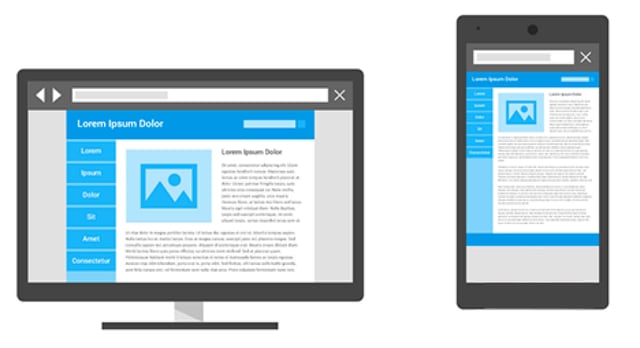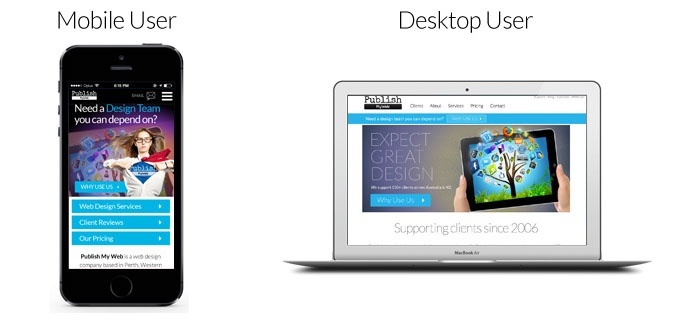How to Use Your Core Values to Inspire, Retain, and Energize Your Team
For the last few decades, but especially so in recent years, people are seeking out more than just an income from their place of employment. More...

.png?width=692&name=Why%20and%20How%20to%20Optimize%20Your%20Website%20for%20Mobile%20(3).png)
As a business owner, you most likely already know how critical it is to be active and visible online. Google prioritizes mobile friendly sites over sites that aren’t mobile friendly when listing search results. Considering the oversaturation of websites online, having a mobile optimized website can make your business stand out. Let’s look at exactly why and how mobile optimization will improve your business.
Mobile use is dominating and mobile devices account for 52.99% of global Internet traffic. For some consumers and clients, your website could be their first impression of you. Maintaining a strong web presence opens this mode of communication between you and your clients and builds credibility.
Websites that aren’t mobile optimized usually have longer load times and smaller text. Causes of slow-loading content relate to images displayed on the site not being optimized and code that needs to be cleaned up. This frustrates customers and causes them to leave your site faster. Optimizing your website and holding on to these visitors will improve your website ranking on search engines and increase customer satisfaction.
Before you decide which option is best for your business, you’ll have to consider whether or not your site needs to be optimized for mobile. This is based partly on your client base and web traffic.
Check your Google Analytics for mobile traffic and look at the length of time your audience is spending on your site. For most companies, <30% mobile traffic is a sign that your website needs to be optimized for mobile. Notice any differences between your site’s bounce rates on mobile or desktop devices. This also can tell you if your site needs to be optimized.
Thankfully, you have four great options to improve your site for mobile device users you can choose from based on your business and your clients.

[Source: Design Modo]
The first option is a mobile friendly site. This is the bare minimum when it comes to mobile improvements. Mobile friendly sites were designed specifically for the desktop platform and then become simply a shrunken version of your desktop website when viewed on mobile. This frequently means the text is too small for most people to read and certain aspects of the design don’t transfer over well.

[Source: Publish My Web]
The second option is to create a separate mobile site. Under this model, you create a separate version of your site that is specifically designed to cater to mobile users. This model takes advantage of easy tap-to-call, tap-to-email, or tap-to-purchase features on their site, making mobile users’ experience with the site quick, efficient and simplified.
However, this option requires double the work, is often expensive and some aspects of your desktop website won’t transition properly to mobile. To combat this issue, some companies have opted to create separate apps for their mobile users so there is no loss of design features, rather than designing a separate mobile version of their site.
.png?width=691&name=mobile-first-webdesign-022-1024x689%20(1).png)
[Source: Soulful Hustle]
Another great option for optimizing your site for mobile is a mobile-first design. As the name suggests, mobile-first sites are created specifically for the mobile platform. This option often uses a simple design with a single column layout that is simply scaled up when being viewed on a desktop, usually with little loss of website features when transitioning between different platforms. This can be a good alternative to creating separate mobile and desktop versions of your website.

[Source: Soulful Hustle]
The last option is a mobile responsive site. This model, like the mobile first model, is very thumb-friendly. It makes information simple to access and clearly organized. Unlike the previous three models, mobile responsive sites aren’t designed for a specific device, but rather are designed to cater to any device.
The responsive option completely scales and reformats your website’s properties ‘‘responsively” to the screen it is being viewed on so your content can achieve maximum readability and usability on any device. It frequently features ground-up framework design that allows for a seamless transition between mobile, tablet and desktop interfaces. This means that the site’s code calls for the content to be displayed differently. For example, a large photo on your desktop site may not display at all on mobile. The result of this design framework is shorter load times and easy-to-read and easy-to-access content.
If you have looked at your client base and Google Analytics and have decided that it’s time to optimize your website for mobile devices, consider these tips:
In addition to your website format, your content needs to evolve in order to best take advantage of the changes that have come with the rise of mobile use. A major way the rise of mobile affects your content is based on the new way we are searching for information online.
While it was common to rely on keywords and search in fragments for your search, we are increasingly searching for information in a more conversational way than ever. Search engine algorithms have changed to keep pace with this shift, affecting the way we receive search results. In turn, the way we organize and connect our content has shifted. This accounts for a rise in pillar content.
Rather than a site that simply has lots of stand-alone articles with keywords, pillar content is connected by singular broad topics. All articles that cover this topic are found on the pillar page, which then segments these articles into clusters by subtopic. In each individual article, the over arching topic and subtopic are expanded upon. The pillar page and each subtopic cluster are constantly linking to each other, which compiles your information in a relevant way and connects users to related content. Beyond organization, pillar content is organized so that as any one article succeeds in search engine ranking, all the other articles in that cluster will succeed too.
Mobile optimization provides your business with a guaranteed, concrete and measurable advantage over your competitors who are lagging behind on user-friendly design trends. Optimizing your site for mobile ensures shorter load times, higher search engine ranking and higher user satisfaction. Think about which of the four options is best for your business:
Consider optimizing your website for mobile to ensure everyone gets the chance to enjoy your awesome website, regardless of the device they’re viewing it on.
Mobile-friendly vs. Mobile-Optimized vs. Responsive Design, (Torspark)
Why You Absolutely Must Have a Mobile Optimized Website, (Business2Community)
5 SEO Basics for Your Quality Content (Marketing Partners)
-------
[Mikayla Varunok is a senior Public Communications major and Applied Design minor at University of Vermont. Originally from New York, she hopes to return and pursue a career in marketing.]
The Change Conversations blog is where changemakers find inspiration and insights on the power of mission-driven communication to create the change you want to see.
© 2009- to present, Marketing Partners, Inc. Content on the Change Conversations blog is licensed under a Creative Commons Attribution-Noncommercial-NoDerivs 3.0 United States License to share as much as you like. Please attribute to Change Conversations and link to ChangeConversations.
Creative Commons License may not apply to images used within posts and pages on this website. See hover-over or links for attribution associated with each image and licensing information.

For the last few decades, but especially so in recent years, people are seeking out more than just an income from their place of employment. More...

You know nonprofit organizations need websites just as small businesses do, but you may be surprised to learn nonprofit sites can be more complex and...

In today’s rapidly evolving media landscape, understanding where and how your story is told isn’t just strategic—it’s essential. How you communicate...